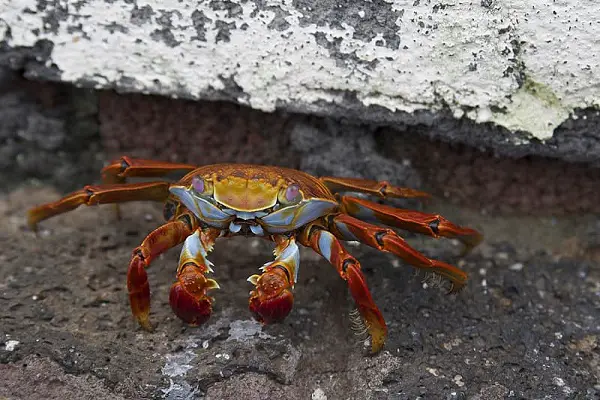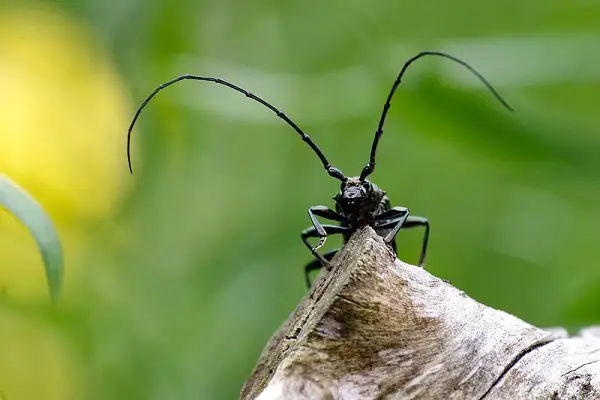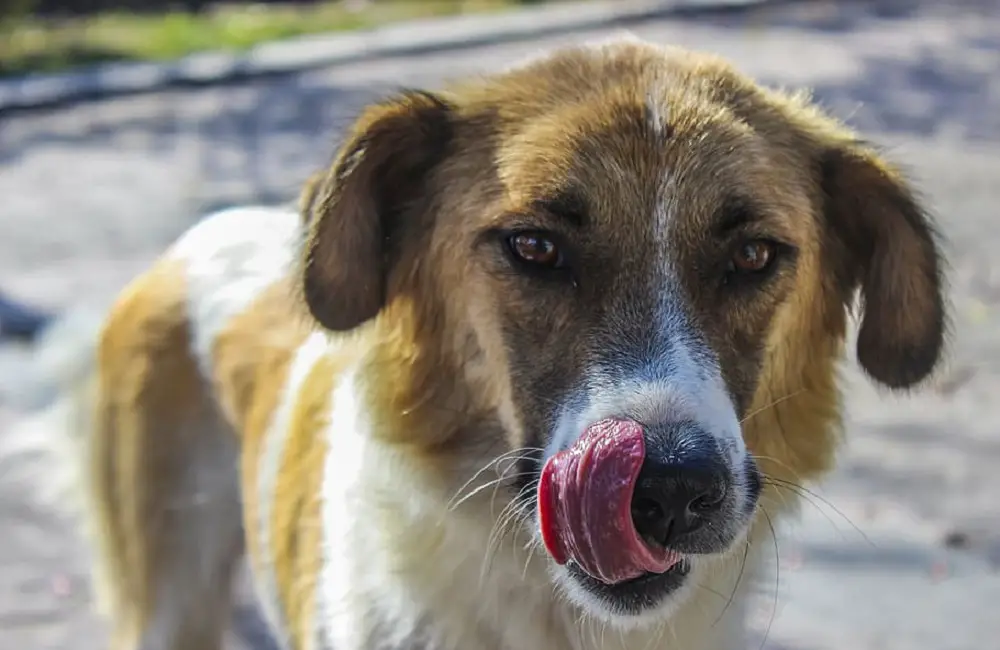For humans and other animals, eating time is the best time! We used our tongues to taste the food, and if it tastes yummy, then we are more likely to eat that food over and over again.
Animals and humans that have tongues use the tongues to taste. But how do our tongues work?
Our tongues have taste buds. Taste buds are sensory organs that allow creatures with tongues to experience different tastes such as sweet, salty, bitter, and sour. That is why creatures with tongues know to distinguish what is nasty and good tasting food.
However, some animals don’t need to use their tongues to be addicted to the foods they eat. These animals have no tongues, but they enjoy eating.
There are some animals naturally have no tongues. What animals have no tongues? Animals that do not have tongues are sea stars and other echinoderms, insects, and crustaceans creatures. Even though they have no tongues, they still need to eat to survive.
But how do they enjoy the food they eat if they have no tongues? Sounds intriguing?
Let’s take a look at some species that do not have tongues and let us know how they eat and taste their foods.
What Is The Importance Of Tongues For Some Animals?
For humans, tongues are essential for talking, tasting, chewing, and swallowing food. But, what is the use of tongues for some animals that have tongues?
For some animals that have tongues like birds, mammals, some fish, reptiles, and amphibians, they use their tongues to get food, to communicate, and to taste and manipulate foods in their mouth.
Without a tongue, these animals will not be able to eat and most likely to die because of starvation. Carnivores, herbivores, and insectivores are some of the animals that will not be able to eat if they lose their tongues.
However, for some animals, lack of tongue is not an issue for them to enjoy and chew their foods. They can still survive even if they don’t have tongues.
These Are The Animals That Have No Tongues
Below are the different species of animals that have no tongues and doesn’t need one to survive and to eat food that they like:
1. Echinoderms

What are the echinoderms? Echinoderm animals are any member of the phylum Echinodermata, and they are also part of marine animals. The phylum Echinodermata are part of the phylum classifications
Echinoderms can be found below the ocean, from the intertidal zone to the abyssal zone. They are also considered essential both ecologically and geologically.
Most animals included in the echinoderms can reproduce asexually, and they can also regenerate their tissue, organs, and limbs if needed. Echinoderms are also brainless, heartless, and headless, but they can still live in a longer span.
Animals that belong to the echinoderms are:
- Sea stars
- Sea Urchins
- Sea Cucumbers
- Crinoids
- Brittle stars
- Blastoids
- Cystoid
- Eocrinoidea
Echinoderms eat other kinds of invertebrates. The favorite food that they mostly like to hunt are snails, crustaceans, marine worms, fish, and even their fellow echinoderms. But how do they eat their prey?
These animals have no tongues, but they can eat. One example is the sea stars. Sea stars are omnivores, and they eat their prey without any use of the tongue. They swallow their prey whole, or they digest their prey outside of their bodies by pushing their stomach out of their bodies.
2. Crustaceans

Crustaceans animals are part of the phylum Arthropoda, and they can also be treated as the subphylum under the clade Mandibulata. Some crustaceans like shrimps are closely related to other types of insects and other hexapods.
Crustaceans are also considered as the second-largest class in the animal kingdom because they have 38,000 species that are classified into six classes.
Different classifications of crustaceans animals are below:
- Branchiopoda
- Remipedia
- Cephalocarida
- Maxillopoda
- Ostracoda
- Malacostraca
Most crustaceans live in the ocean. However, some species of crustaceans live under the freshwater, land, and woodlice. Crabs live in the land under the sand, shrimps live under the ocean, and barnacles live in the rocks, walls, or ships.
Crustaceans eat various foods. They are scavengers of the sea, which means they eat scraps and dead creatures. Some crustaceans like crab, shrimp, and prawns find food often during night time because they usually hide in crevices during day time.
Some crustaceans like crabs and lobsters are active predators, which means that they can also hunt alive prey and kill it with their powerful claws.
3. Insects

Insects are hexapod invertebrates, and they are also part of the phylum Arthropoda. They are considered the largest group of the phylum Arthropoda that has a million described species, and potentially over 90% of the animal species living on Earth are insects.
Insects can be found anywhere. They can be found at your house, in the jungle, ocean, freshwaters, etc. Like literally there is an insect wherever you go.
They are considered pests of humans and use insecticides to kill them. However, there are many good benefits an insect provides to our mother nature which are underappreciated.
Without them, the world will be messy because dead animals and plants will be left scattered, and no one will dispose of human wastes.
Most insects reproduce by sexual reproduction. The female insects will produce eggs and the sperm is produced by the male insects. The male insect will fertilize the egg produced by the female insect.
However, some insects reproduce asexually, which means that no cell fusion is happening, and the offspring can come from a single parent only. This type of reproduction on insects is called parthenogenesis.
The insects that can reproduce asexually can reproduce many offsprings in just a week or day. Several insects like an aphid, ant, parasitic wasp, bee, midge, grasshopper, and stick insect usually reproduce through asexual reproduction.
Insects have no tongues, but they eat. Insects eat various things like plants, leaves, roots, seeds, nectar, or wood. However, some parasitic insects need a host to survive, and they feed through their host.
Most insects use their feet to taste the food. Butterflies and flies are the common insects that use their feet to taste the food. While some insects like cockroaches taste their food with the paraglossa.
Animals That Use Their Tongues To Get Food
To give you other information about tongues in animals, let’s take a look at some species of animals that use their tongues to get food.
Animals the use their tongues to get food are:
- Mammals
- Reptiles
- Amphibians
- Birds
1. Mammals
Mammals are vertebrate animals, and they breathe through the air. Mammals also have lungs, even the ones who live underwater like dolphins and whales. Also, all mammals have a tongue, and they use it to get and intake their food.
What do mammals eat? Mammals are classified into three different groups. The three different groups are herbivores, carnivores, and omnivores.
Herbivores eat grass, plants, roots, and fruits (Example: Elephant). Carnivores love to eat meat. They either hunt living prey for a meal, or they eat dead animals (Example: Lion). Omnivores love to eat both animal meat and plants (Example: Human).
Mammals cannot enjoy their foods without their tongues. Mammals use their tongues to position the food for proper chewing and to taste their food before they eat it.
2. Reptiles
Reptiles are tetrapod animals. They are under the phylum Chordata, and in their class is called Reptilia.
What do reptiles eat? Reptiles eat different kinds of food. Some reptiles feed on other forms of animal lifelike insects, birds, fishes, mammals, and their fellow reptile. However, some reptiles are vegetarians like land tortoises.
Other reptiles like snakes usually eat twice a week only. The number of times snakes eat depends on their age, size, and activity level. So it means that younger and smaller snakes usually eat a few.
Likewise, the reptiles also use their tongues to eat and to produce sounds to communicate. Insect-eating reptiles need their tongues to catch their prey.
3. Amphibians
Amphibians are tetrapod vertebrates under the class of Amphibia and phylum Chordata. They live in a wide variety of habitats, which means that amphibians can be seen under the water (freshwater aquatic ecosystems), on the land, under the desert, or even on trees.
What do amphibians eat? Almost all adult amphibians love to eat meat, while some amphibians eat insects, slugs, worms, and even small mammals. Amphibians use their tongues to eat. There are also poisonous amphibians who poison and kill their prey before they eat it.
Amphibians need their tongue to eat, for example, the frog. Frogs usually eat insects, and they use their tongues to catch their prey.
The frog’s tongue is attached to their front mouth, which is why it is easy for them to catch insects. How do they do it effortlessly? Frogs flip their sticky tongues forward to catch their prey, and quickly pull their tongue back and put their prey on their throat.
When the frog does not feel like eating and wants to chill, they keep their tongue curled inside their mouth.
4. Birds
Birds are warm-blooded vertebrates under the class of Aves and the phylum Chordata. Almost all types of birds have wings to fly, but some birds are too big to fly.
Most birds love to eat fruits, insects, worms, nectar, pollen, and plants. However, big birds like eagles love to eat the meat of smaller animals than them. Birds use their tongues to enjoy their meal and to help them to catch their prey.
However, birds have no fleshy tongues like mammals, but they have tongues. Different kinds of birds have different types of tongues.
Birds that eat nectar have tube-shaped tongues. Eagles have large tongues, and the woodpecker has long tongues for them to catch an insect effortlessly.
Do Fishes Have Tongues?
Fishes are vertebrate animals that located under saltwater ecosystems or cold-water ecosystems. Most fishes are ectothermic or cold-blooded to make their body temperature change. Fishes use their gills to breathe under the ocean.
Fishes love to eat insects, plants, algae, vegetables, and fruits, or other fellow fish. Small fishes usually eat insects, vegetables, and fruits, while the big fishes like sharks are carnivorous and often eat smaller fishes than them.
Fishes have tongues, but their tongues are not like the tongues of mammals. The tongue of a fish is on the floor of their mouth. They use their tongues to help them to catch their prey and to place their food for proper chewing.
There are also some species of fish where their tongues have teeth. They use their tongues so that they effortless kill and hold their prey.
All species of fish have tongues, but not all of them can stick out their tongues. Why? Because fish tongues’ are a loose parallel. Unlike the tongues of humans and mammals, the tongue of the fish has no muscle.
What Animal Has The Longest Tongue?
Do you know what animal has the lengthiest tongue?
The animal that have the longest tongue are the giant anteaters. They can stick their tongue out and can reach eight feet long from their mouths.
Anteaters can be found in the south and central America. However, because of human occupancy, they have to migrate to other places.
The Anteater’s habitat is in the jungle. They live in tropical and dry forests, savannas, open grasslands. Also, anteaters will stay in a place where ants are abundant.
Anteaters have no teeth, so how do they eat? An anteater’s tongue is long enough to eat and swallow 35,000 plus ants and termites per day.
All anteater species can have long tongues. But from all of the anteater’s species, the giant anteater has the longest tongues among them all. The giant anteater can stick their tongue out and can reach eight feet long from the tip of its snout until the end of its tail.
Final Words
Eating is the best habit that any living animal enjoys. It is also one way for them to survive because they get nutrients and vitamins in what they eat, which helps them to stay healthy. The more healthy food an animal eats, the longer it will live.
Even though some animals do not have tongues, they can still be able to eat. Like I have said, eating is essential for all animals because it is one way to survive. No tongue or have a tongue, we living creatures must eat to live a long and healthy life.





